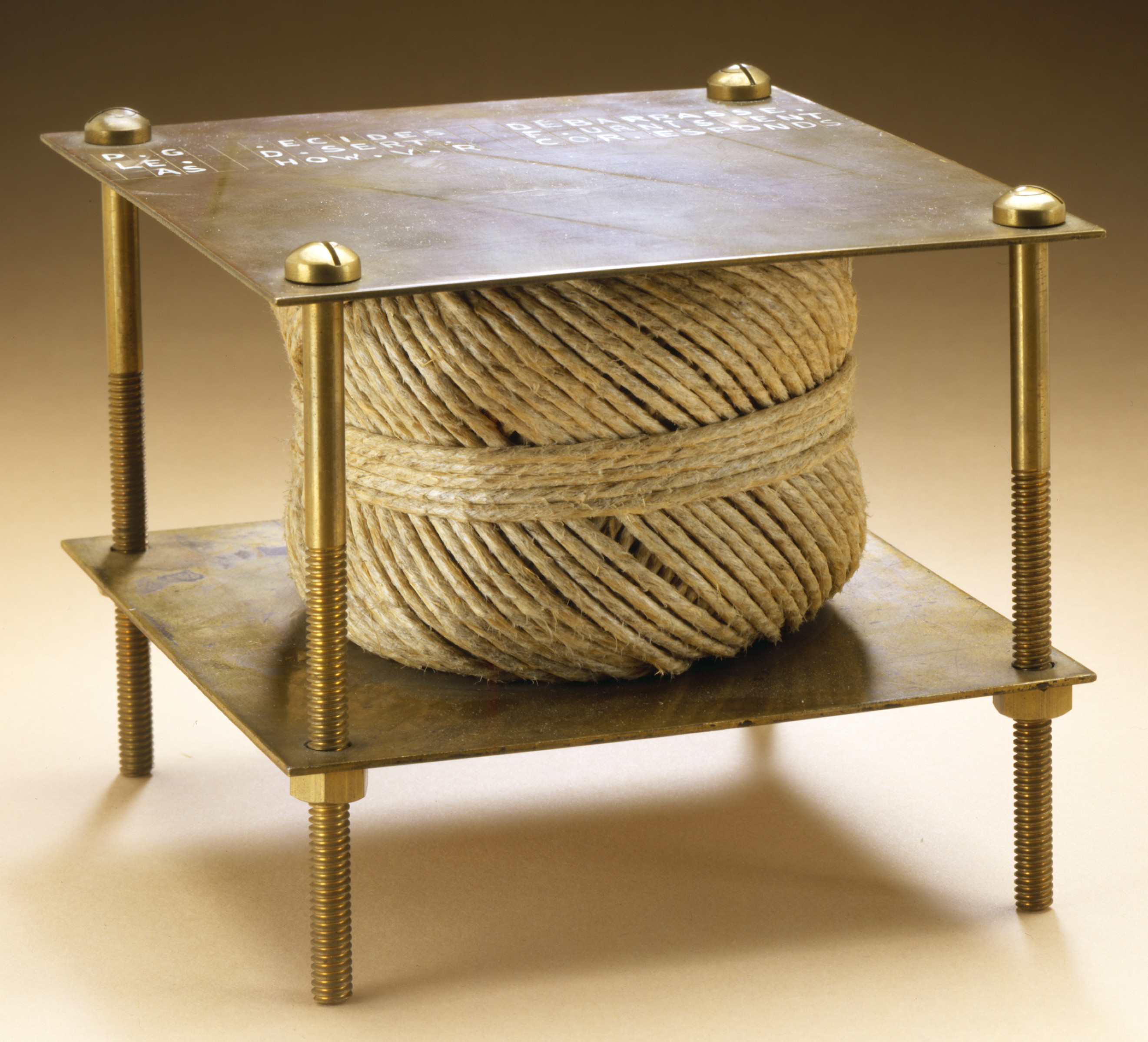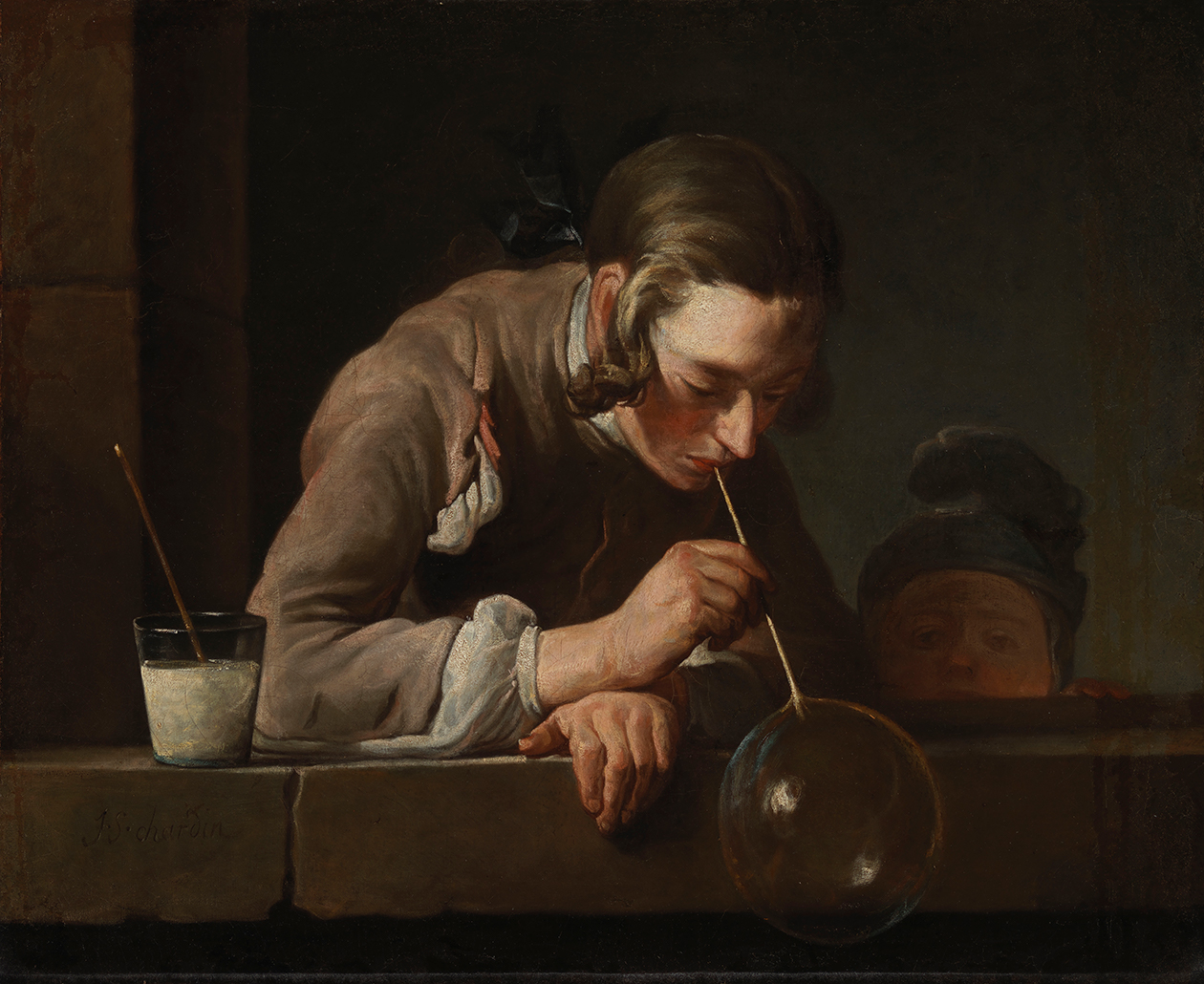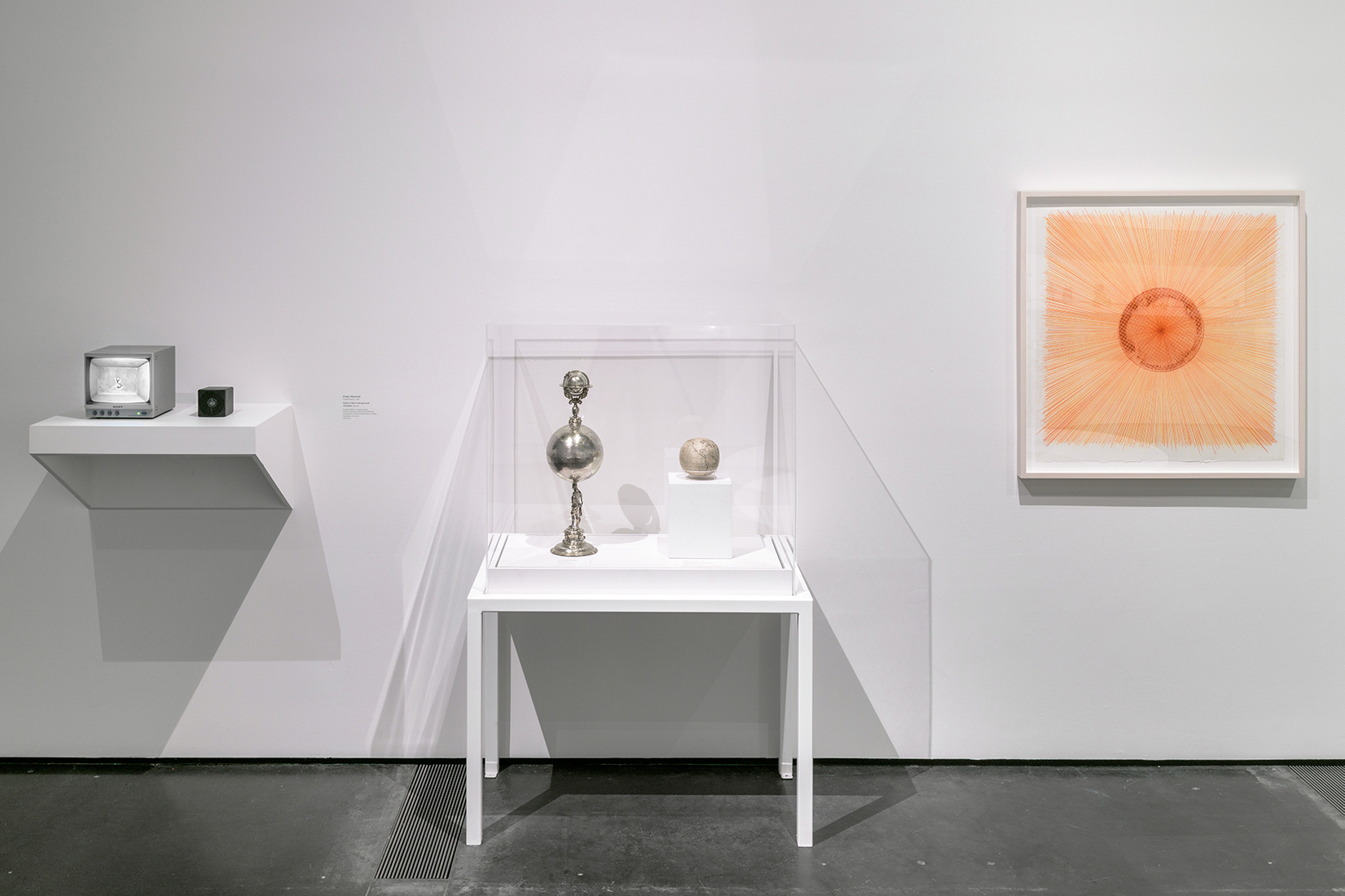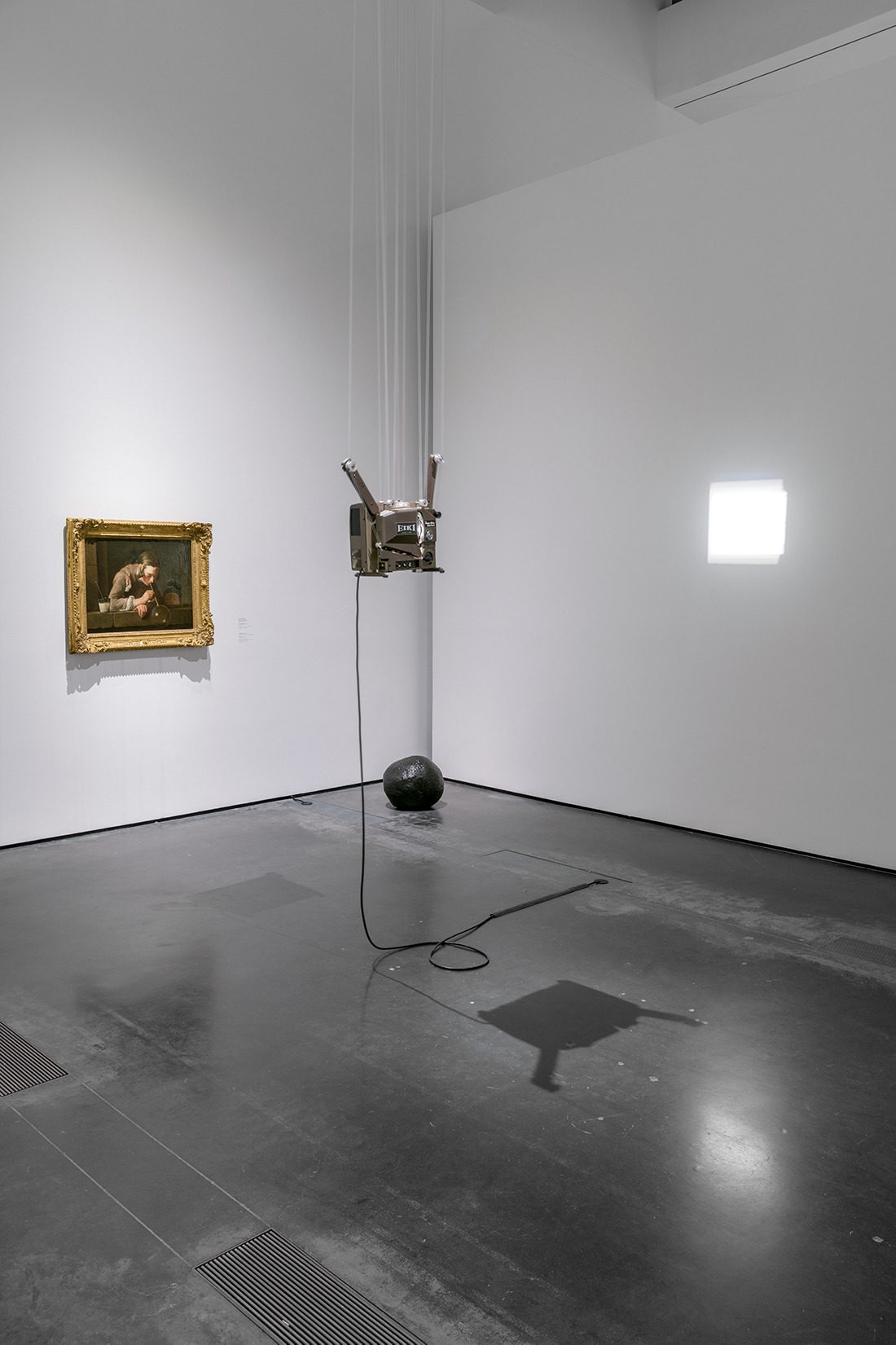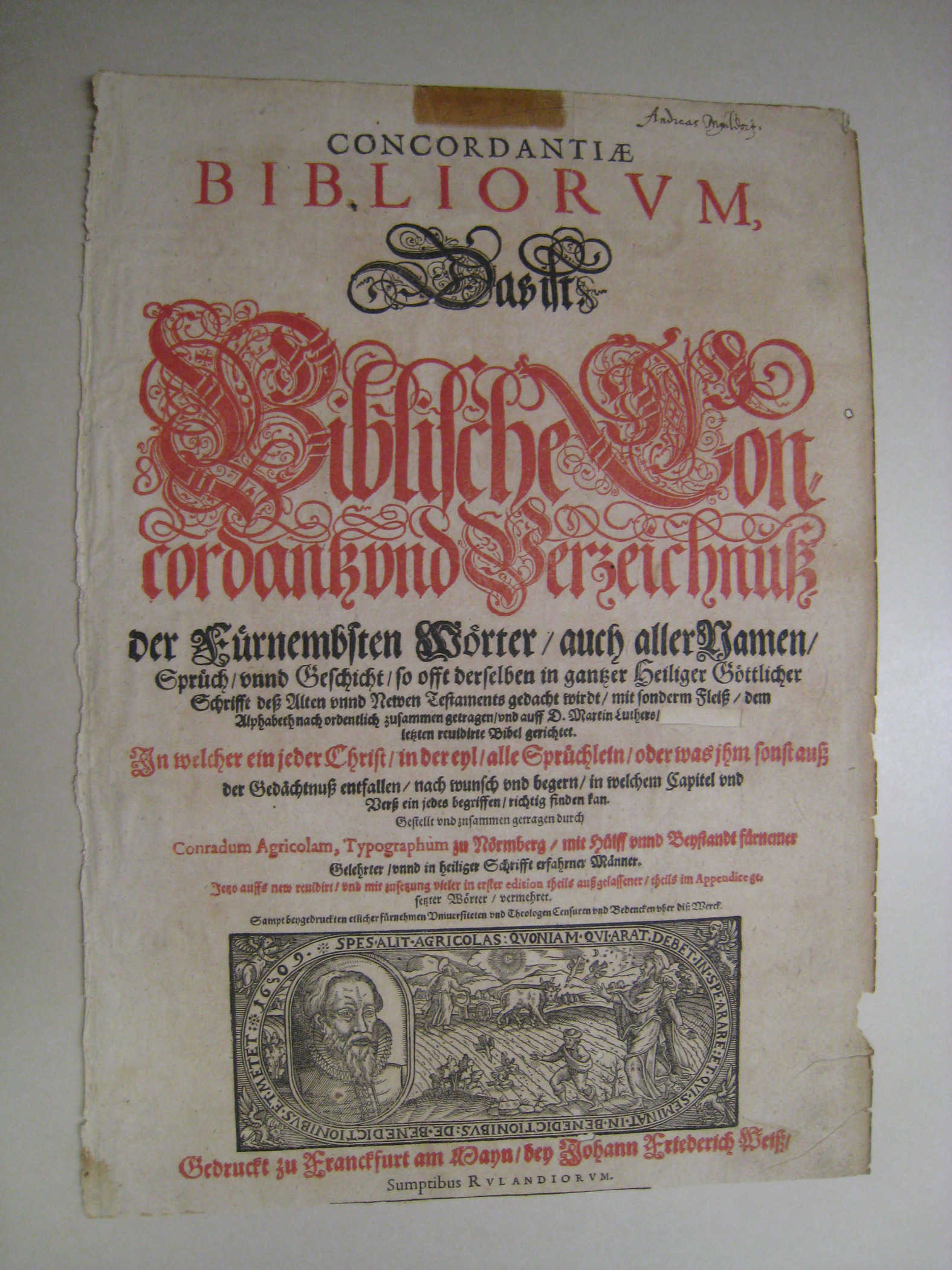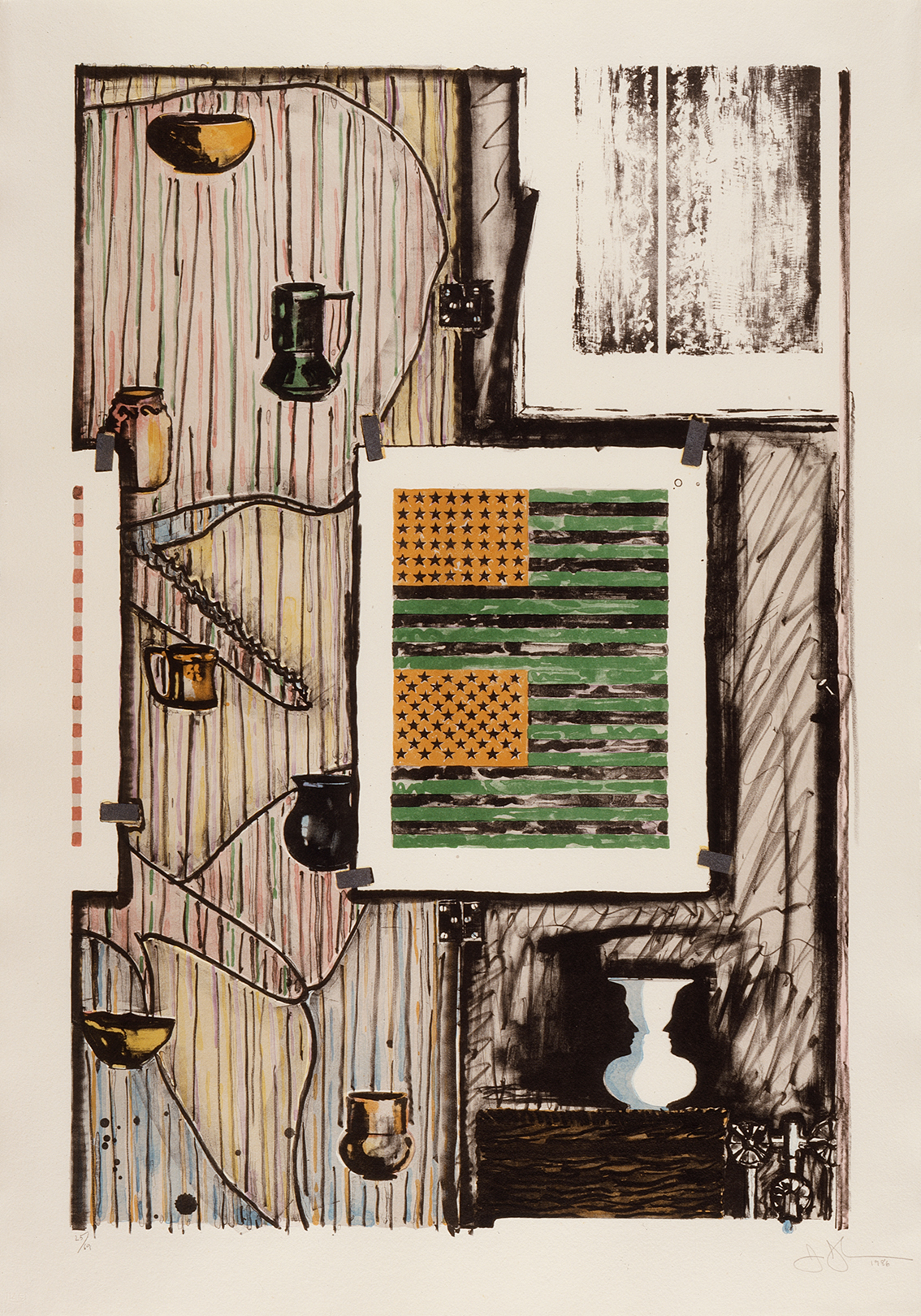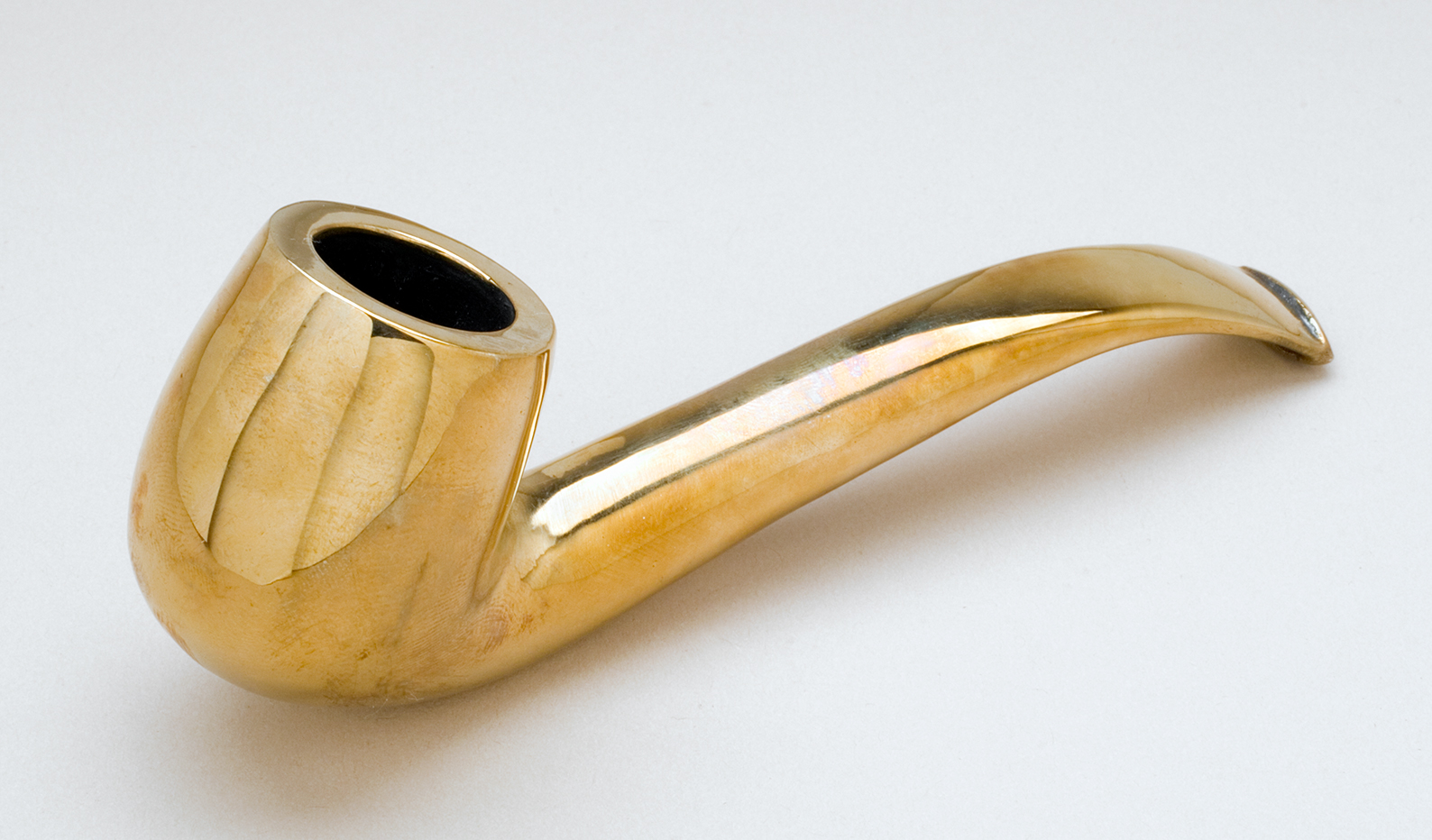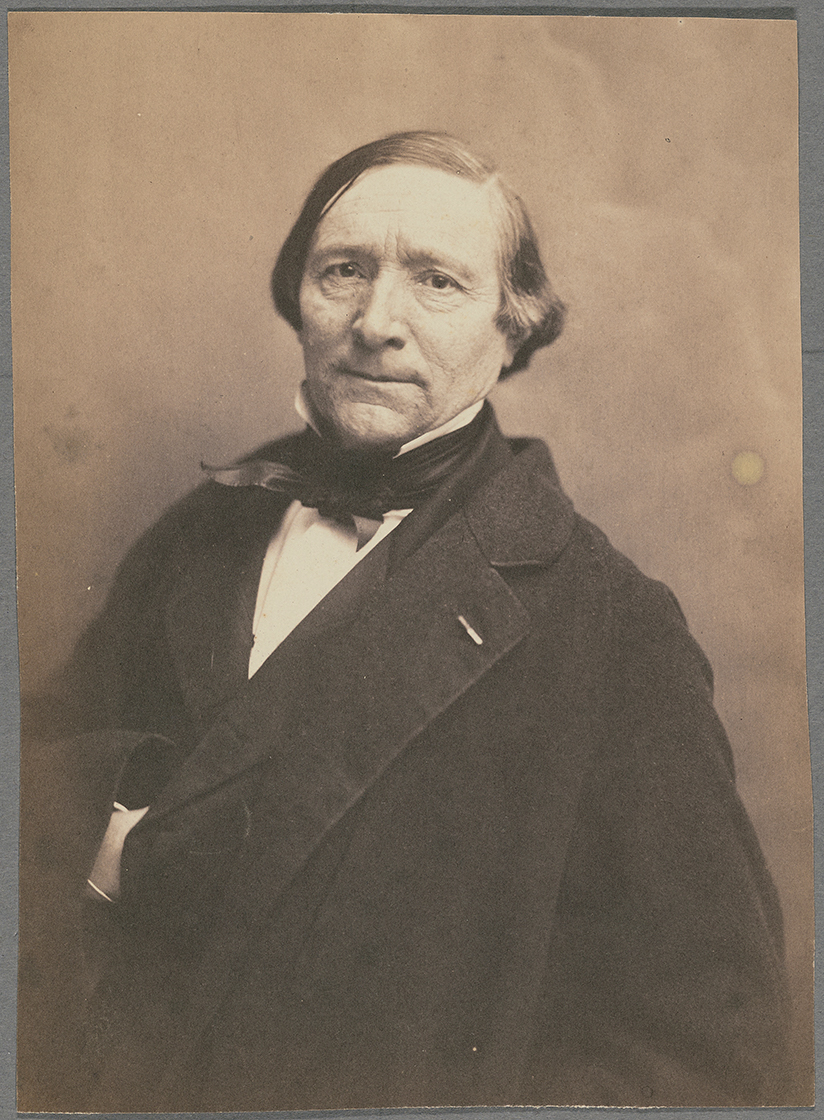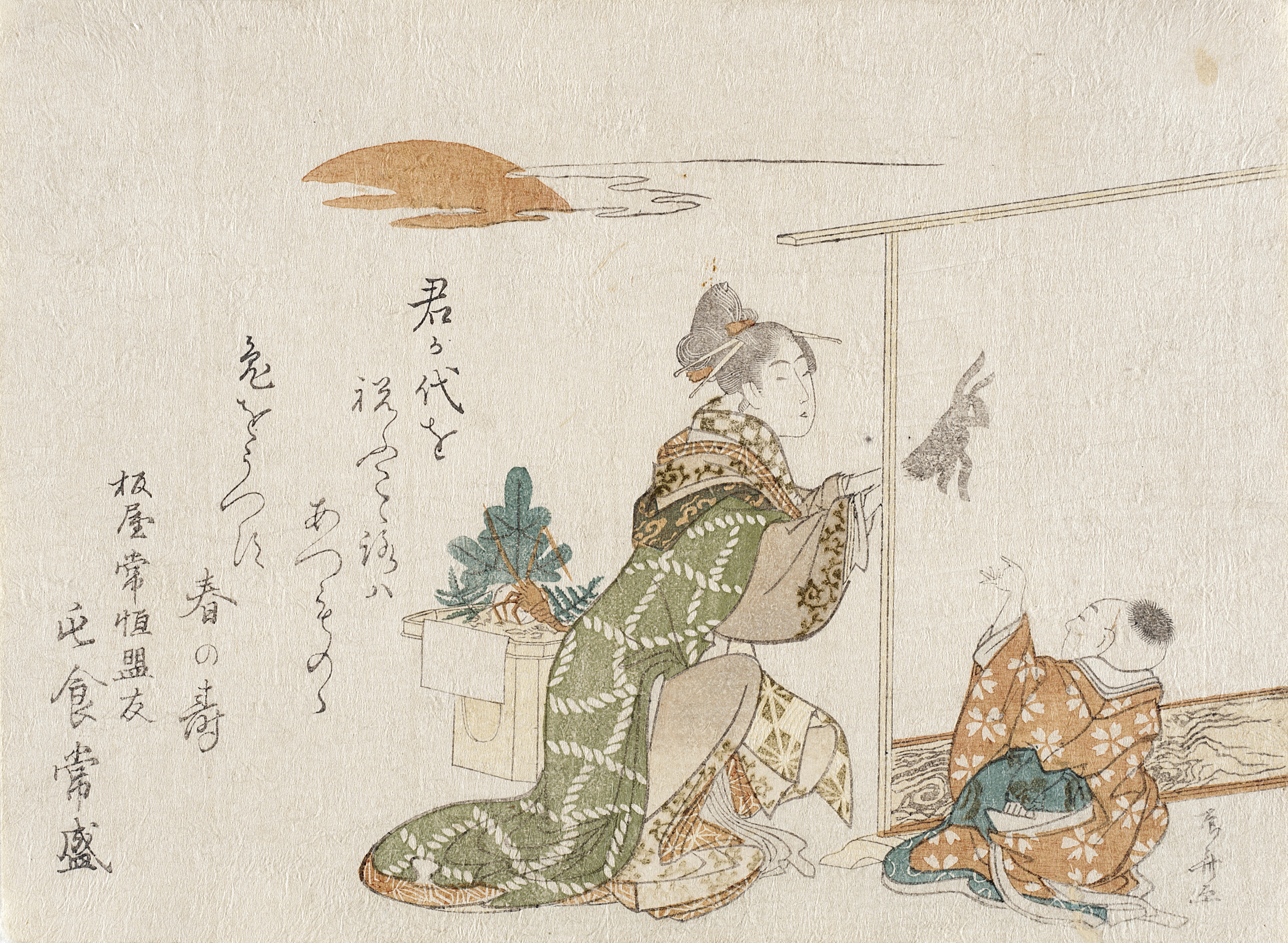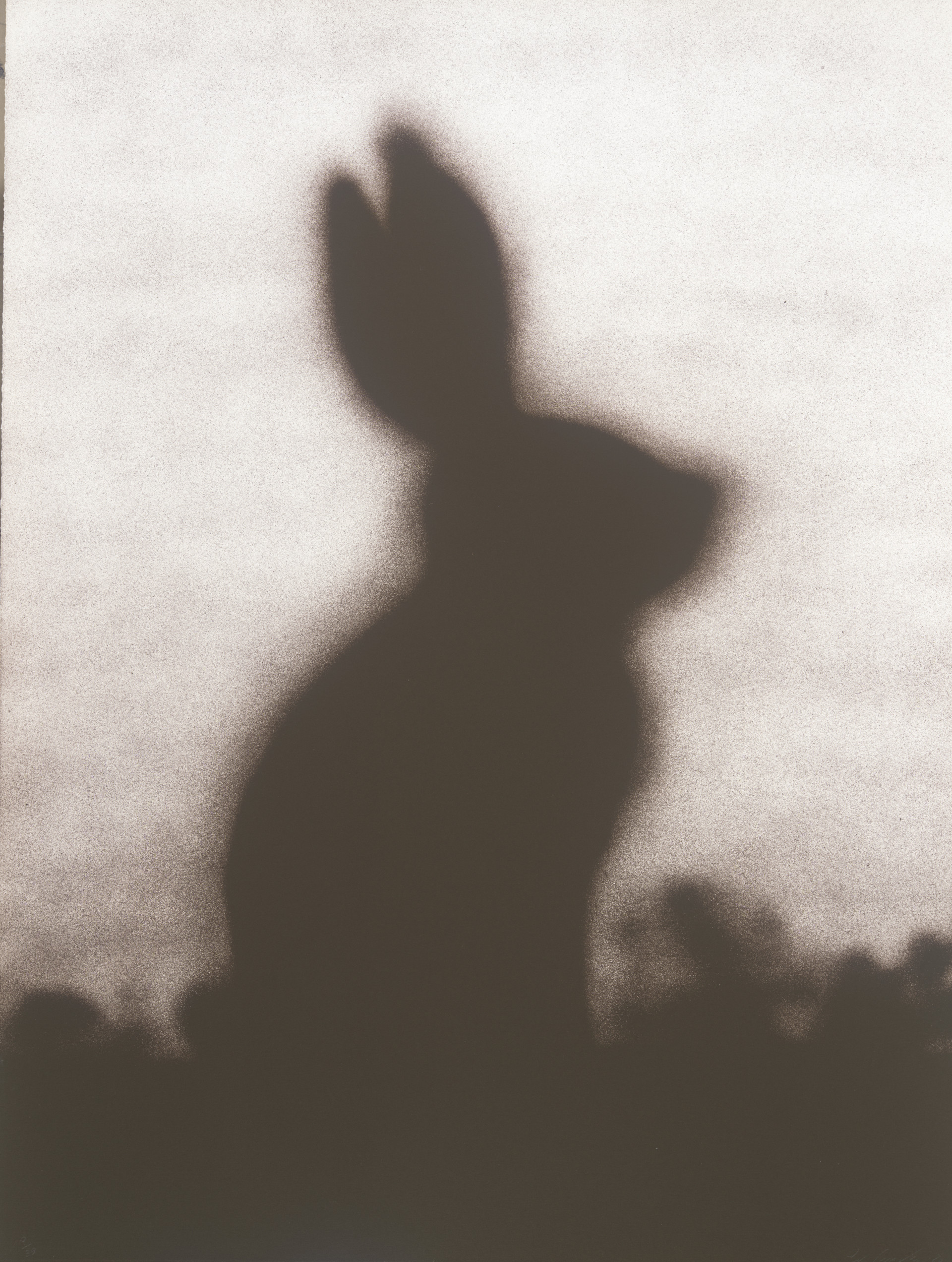NOT I: Throwing Voices (1500 BCE–2020 CE)
akwong
Wed, 06/16/2021 – 14:28
How to Use Exhibition Guides
How to Use Companion Guides
NOT I: Throwing Voices (1500 BCE–2020 CE)
“The great encyclopedist, essayist, and music amateur Denis Diderot had a penchant for strong analogies, such as this one… written in 1769:
The sensitive vibrating string oscillates and resonates a long time after one has plucked it. It’s this oscillation, this sort of inevitable resonance that holds the present object, while our understanding is busy with the quality which is appropriate to it. But vibrating strings have yet another property—-to make other strings quiver. And thus the first idea recalls a second, and these two a third, then all three a fourth, and so it goes, without our being able to set a limit to the ideas that are aroused and linked in a philosopher who meditates or who listens to himself in silence and darkness.”
Veit Erlmann, Reason and Resonance: A History of Modern Aurality
American ventriloquist Edgar Bergen once described his colleague Valentine Vox as a dishonest ventriloquist because he did not move his lips when he performed. Bergen’s distrust highlighted an obvious but elusive aspect of this art: ventriloquism is about revealing a voice as much as it is about concealing it.
Issues of identity, embodiment, performance, and objecthood are at the core of even the most conventional ventriloquist sketch: Where is the voice coming from? How is that voice split into many bodies? Whose voice is this? Who is speaking on behalf of whom?
Drawn primarily from LACMA’s encyclopedic collection, the exhibition considers ventriloquismas both a theme and a methodology integral to the logic of institutions devoted to the dissemination of knowledge, namely museums and libraries. Using this popular form of entertainment as a structuring device for the exhibition allows for cross-collection discussions of representations of sound and text, and the misalignment of voice and body.
Arranged in ten nonsequential sections, the exhibition features more than two hundred objects spanning more than thirty-five hundred years to offer various degrees of ventriloquized voices, from the literal to the liberal. NOT I includes a special project by Meriç Algün in collaboration with the Los Angeles Public Library, as well as commissions from artists Raven Chacon, Patricia Fernandez, and Puppies Puppies (Jade Olivo Kuriki).
NOT I: Throwing Voices (1500 BCE–2020 CE)
Dolls, Dummies, Surrogates, Pygmalion, and Plugs
The reanimation of a doll, puppet, or sculpture is a common topic in love and horror stories alike. Ventriloquists produce the illusion of reanimation by throwing the voice (breathing) from one body to another. In Greek mythology, Pygmalion falls irredeemably in love with an ivory sculpture he makes of a woman. Upon kissing it, he feels the warmth of her lips and realizes his creation is alive. In the Bible’s Genesis, God creates human life by breathing into a dust figurine.
Dolls, Dummies, Surrogates, Pygmalion, and Plugs
Rene d’Harnoncourt Puppet, 1929
The scene depicted in this photograph is theatrical, reverential, and almost absurd. The curtain in the background suggests a stage where a play is coming to an end. The marionette is Rene d’Harnoncourt, a curator and art dealer who was living in Mexico at the time. Twenty years after this photograph was made, d’Harnoncourt became director of the Museum of Modern Art in New York, where he developed a global vision for the museum and distinguished his exhibitions with thoughtful and theatrical spatial designs.
Tina Modotti, Rene d’Harnoncourt Puppet, 1929, the Museum of Fine Arts Houston, Museum purchase funded by Marion and Joe Mundy in honor of Rachel Mundy, 96.563, Photograph © The Museum of Fine Arts, Houston

Tina Modotti
Italy, 1896–1942, active Mexico and Russia
Rene d’Harnoncourt Puppet, 1929
Gelatin silver print
The Museum of Fine Arts, Houston, museum purchase funded by Marion and Joe Mundy in honor of Rachel Mundy
96.563
Rene d’Harnoncourt Puppet, 1929
The Tower of Babel Germany, c. 1637
For hundreds of years, encyclopedic museums have aspired to speak many languages, portray myriad cultures, and represent a comprehensive history of humanity. This impossible task, however, becomes more useful when understood as a flawed, fragmentary project.The legend of the Tower of Babel explains the origin of diverse languages as a divine punishment for human ambition: plans to build a tower taller than the skies collapsed after builders started speaking different languages. The tower remained unfinished, but amid the chaos and confusion, multiple languages and systems of communication flourished.
The Tower of Babel, c. 1637, Los Angeles County Museum of Art, gift of Mrs. Irene Salinger in memory of her father, Adolph Stern, photo © Museum Associates/LACMA
Listen beautiful relax classics on our Youtube channel.

The Tower of Babel
Germany, c. 1637
Woodcut with hand coloring Los Angeles County Museum of Art, gift of Mrs. Irene Salinger in memory of her father, Adolph Stern
54.89.72
The Tower of Babel Germany, c. 1637
Untitled frames, 2020
For this commission, we invited Fernández to produce frames for six prints by Francisco de Goya. The artist designed and carved four sculptures that double as frames, further amplifying the ventriloquist game of unfolding voices.
Patricia Fernández, Untitled Frames, 2020, courtesy of the artist, commissioned by the Los Angeles County Museum of Art, © Patricia Fernández, photo © Museum Associates/LACMA

Patricia Fernández
Spain, b. 1980, active United States
Untitled frames, 2020
Hand carved walnut, pine wood, and one or two prints by Francisco de Goya
Courtesy of the artist, commissioned by the Los Angeles County Museum of Art
Untitled frames, 2020
Bowl, late 15th century
Bowl, late 15th century, Los Angeles County Museum of Art, purchased
with funds provided by the Nasli M. Heeramaneck
Collection, gift of Joan Palevsky, photo © Museum Associates/LACMA

Afghanistan, late 15th century
Copper (engraved and originally tinned)
Los Angeles County Museum of Art, purchased
with funds provided by the Nasli M. Heeramaneck
Collection, gift of Joan Palevsky
AC1996.38.1
Audio Available
Listen to LACMA Curator Linda Komaroff discuss this object in depth.
Bowl, late 15th century
Tabulae anatomicae LXXIIX, 1627
Giulio Cesare Casseri is the author of an early anatomical treatise that offered detailed accounts of how the larynx functions and its role in the production of the voice. This treatise influenced discussions about whether ventriloquists had supernatural or demonic powers or had a different physiognomy that allowed them to speak from their bellies.
Installation photograph, NOT I Throwing Voices (1500 BCE-2020 CE), Los Angeles County Museum of Art, 2021, photo © Museum Associates/LACMA

Giulio Cesare Casseri
Italy, 1552–1616
Tabulae anatomicae LXXIIX, 1627
Book
The Huntington Library, Art Museum, and Botanical Gardens
Tabulae anatomicae LXXIIX, 1627
Flaubert Letters III, 1987/2012
These crystal objects possess excerpts of the correspondence between French writers and lovers Gustave Flaubert and Louise Colet. While Flaubert’s letters have been widely published, Colet’s did not make it to posterity. Bloom began working on this project in 1987. The artist rewrote Colet’s lost epistles and engraved them on crystal in her own handwriting. Flaubert’s voice was lettered by a male friend of the artist.
Barbara Bloom, Flaubert Letters III, 1987/2012, Los Angeles County Museum of Art, Gift of John Baldessari, © Barbara Bloom, photo © Museum Associates/LACMA

Barbara Bloom
United States, b. 1951
Flaubert Letters III, 1987/2012
Glassware engraved with fragments of letters from Gustave Flaubert to Louise Colet with vitrine
Los Angeles County Museum of Art, gift of John Baldessari
M.2014.294.1–.6
Flaubert Letters III, 1987/2012
Word for Word: extension for dissolution/Twain and Borges, 2017
Jorge Luis Borges lifts a paragraph from Mark Twain’s Life on the Mississippi (1833) for his story “The Cruel Redeemer Lazarus Morell” (1935). The paragraph depicts the Mississippi River expanding the North American continent into the Gulf of Mexico. Borges, however, replaces the word “expansion” with “dissolution.” In his version of the story, the Mississippi does not “extend” America into the Gulf, but becomes “a continent in perpetual dissolution.”
Dolores Zinny, Word for Word: extension for dissolution/Twain and Borges, 2017, Los Angeles County Museum of Art, purchased with funds provided by Judith and Alexander Angerman through @email, © Dolores Zinny, courtesy of the artist

Dolores Zinny
Argentina, b. 1968
Word for Word: extension for dissolution/ Twain and Borges, 2017
Two colored pencil and graphite drawings on paper
Los Angeles County Museum of Art, purchased with funds provided by Judith and Alexander Angerman through @email
M.2018.6.3a–b
Word for Word: extension for dissolution/ Twain and Borges, 2017
Kikoemasu ka? (Can you hear me?), 1980
Linda Nishio, Kikoemasu ka? (Can you hear me?), 1980, Los Angeles County Museum of Art, Ralph M. Parsons Fund, © Linda Nishio, photo © Museum Associates/LACMA

Linda Nishio
United States, b. 1952
Kikoemasu ka? (Can you hear me?),1980
Gelatin silver prints, with accompanying text panels and glass sheet
Los Angeles County Museum of Art, Ralph M. Parsons Fund
M.2001.92a–l
Audio Available
Listen to artist Linda Nishio discuss this object in depth.
Kikoemasu ka? (Can you hear me?),1980
The Rattle, the Hidden Noise, the Inner Voice
Marcel Duchamp, With Hidden Noise, conceived 1916, fabricated 1964, Los Angeles County Museum of Art, Purchased with funds provided by The Broad Art Foundation, Carla and Fred Sands, Christopher V. Walker, Suzanne and David Booth, Alice and Nahum Lainer, Herta and Paul Amir, Janet Dreisen, Betty and Brack Duker, Judith and Steaven K. Jones, and Sandy and Jack Terner through the 2003 Collectors Committee, © Association Marcel Duchamp / ADAGP, Paris / Artists Rights Society (ARS), New York 2021, photo © Museum Associates/LACMA
“Duchamp’s work was a collaborative one, made with the assistance of his friend and patron, Walter Arensberg. Duchamp invited Arensberg to insert an object (the nature of which was unknown to the artist) inside a ball of string which Duchamp then clamped shut between two screwed metal plates. Duchamp said of it ‘A Readymade with a secret noise. Listen to it. I will never know whether it is a diamond or a coin.’ The conceit is a powerful one. The inner voice (essence, meaning, intention, investment) of the piece has been (ostensibly) supplied not by the artist, but by his patron. It is, (…)Arensberg poses as the ventriloquist of Duchamp’s dummy (or rather, rattle).” Jon Wood, With Hidden Noise: Sculpture, Video and Ventriloquism
“A man plucked a nightingale and, finding but little to eat, said: You are just a voice and nothing more.” Plutarch, Moralia: Sayings of Spartans [Apophthegmata Laconica] 233a
The human ambition to sing like a bird is probably as old as birds and ambition. Whistles make that longing viable as they turn silent human breath into sounds often resembling a bird call. The legend of Saint Francis, a pious man able to speak with birds and understand their language, is one of the many examples of the quest for interspecies dialogues.
The Rattle, the Hidden Noise, the Inner Voice
Mouth Piece (for a collection of objects), 2020
Audio Available
Listen to artust Raven Chacon discuss this installation in depth.
Roadrunner Ocarina Whistle, Mexico, Colima, Colima, 200 BCE–500 CE, Los Angeles County Museum of Art, The Proctor Stafford Collection, purchased with funds provided by Mr. and Mrs. Allan C. Balch, photo © Museum Associates/LACMA

Raven Chacon
United States, b. 1977
Mouth Piece (for a collection of objects), 2020
Sound installation Courtesy of the artist, commissioned by the Los Angeles County Museum of Art
For this commission, Chacon composed a group of songs from sounds and pitches of pre-Columbian whistles and ocarinas from LACMA’s collection (on display in this gallery). Mouth Piece is performed by Alethia Lozano, principal flutist for the National Symphony Orchestra in Mexico. Presented as “beams of directionalised sound,” as Chacon says, the songs tell stories of other non-sounding objects throughout the exhibition, and invite listeners to align their own voices with the cumulative activity in the gallery.
Mouth Piece (for a collection of objects), 2020
Bubbles
Audio Available
Listen to artist Barba Rosa discuss this installation in depth.
The scene in Jean-Baptiste-Siméon Chardin’s painting depicts a figure blowing a bubble, a symbol of impermanence and fragility. The painting itself is performing that task, rendering transparency visible. Like singing, whistling, or any other variation of speaking, blowing bubbles requires controlled breathing.
Jean-Baptiste-Siméon Chardin, Soap Bubbles, after 1739, Los Angeles County Museum of Art, gift of The Ahmanson Foundation, photo © Museum Associates/LACMA
Bubbles do not produce sound, they encapsulate silence. Bruce Nauman’s bubble is broadcasted to the gallery from a subterranean chamber located in Vienna. Roughly the size of a human body, the chamber is equipped with a lamp, a camera, and a microphone; the images and sounds are transmitted to the monitor displayed in this gallery.
Installation photograph, NOT I Throwing Voices (1500 BCE-2020 CE), Los Angeles County Museum of Art, 2021, photo © Museum Associates/LACMA
In Rosa Barba’s installation, a modified projector is suspended from the ceiling by the very film being projected. The projected image is blank, but gets altered by the dust and scratches that accumulate over the course of the exhibition. Barba’s work engages with the image of the invisible and the apparatus to display it: the body and the bubble, the shaky projector, and the pictureless film.
Installation photograph, NOT I Throwing Voices (1500 BCE-2020 CE), Los Angeles County Museum of Art, 2021, photo © Museum Associates/LACMA
Bubbles
Translated Vase, 2013
Yeesookyung, Translated Vase, 2013, Los Angeles County Museum of Art, Purchased with funds provided by AMOREPACIFIC Corporation, © Yeesookyung, courtesy of Locks Gallery, photo © Museum Associates/LACMA

Yee Sookyung
South Korea, b. 1963
Translated Vase, 2013
Ceramic trash, epoxy, 24k gold leaf
Purchased with funds provided by AMOREPACIFIC Corporation
M.2013.205
Audio Available
Listen to LACMA Curator Virginia Moon discuss this object in depth.
Translated Vase, 2013
Voices from a Lovely Nowhere
Title Page to Concordantiae Bibliorum, printed 1622, Los Angeles County Museum of Art, gift of Abbey Rents, photo © Museum Associates/LACMA
“Ventriloquism is mythical, not just in the sense that it is so intimately bound up with fable and fantasy, but also in that it may fairly be said of it, as early mythographers suspected of myth itself, that it is a past without a present. Whether because it is scandalously or mysteriously archaic, or uncannily premonitory, ventriloquism is always anachronistic, never quite on time.”
Steven Connor, Dumbstruck: A Cultural History of Ventriloquism
Most of the artworks and manuscripts in this gallery showcase ways in which the divine voice becomes a religious text: pages of the Bible inspired by the word of God; a page from the Quran, a text believed to be delivered orally by God to the prophet Muhammad; and a more contemporary textual work by R.B. Kitaj, evocatively entitled Voice from Lovely Nowhere.
Voices from a Lovely Nowhere
Conspiracy, c. 1955
From the Oxford English Dictionary: conspire, v. Brit. /kənˈspʌɪə/, U.S. /kənˈspaɪ(ə)r/ Frequency (in current use): Etymology: < French conspire-r (15th cent. in Littré) (= Provençal cospirar, Spanish conspirar, Italian conspirare), <Latin conspīrāre lit. ‘to breathe together,’ whence, ‘to accord, harmonize, agree, combine or unite in a purpose, plot mischief together secretly.’
Edward Biberman, Conspiracy, circa 1955, Los Angeles County Museum of Art, Purchased with funds provided by the Judith Rothschild Foundation; Hansen, Jacobson, Teller, Hoberman, Newman, Warren & Sloane, L.L.P.; Daniel Greenberg and Susan Steinhauser; the Frederick R. Weisman Philanthropic Foundation; Dr. Judd Marmor; Paul and Suzanne Muchnic; the Reese E. and Linda M. Polesky Family Foundation; and Marvin and Judy Zeidler, © Edward Biberman Estate, photo © Museum Associates/LACMA

Edward Biberman
United States, 1904–1986
Conspiracy, c. 1955
Oil on board
Los Angeles County Museum of Art, purchased with funds provided by the Judith Rothschild Foundation; Hansen, Jacobson, Teller, Hoberman, Newman, Warren & Sloane, L.L.P.; Daniel Greenberg and Susan Steinhauser; the Frederick R. Weisman Philanthropic Foundation; Dr. Judd Marmor; Paul and Suzanne Muchnic; the Reese E. and Linda M. Polesky Family Foundation; and Marvin and Judy Zeidler
M.2002.86
Conspiracy, c. 1955
One and Many Works
Jasper Johns, printed by Keith Brintzenhofe, Universal Limited Art Editions
Ventriloquist II, 1986
color lithograph
Los Angeles County Museum of Art, gift of Tony Ganz in memory of Victor W. Ganz
M. 88.173
Jasper Johns, Ventriloquist II, 1986, Los Angeles County Museum of Art, gift of Tony Ganz in memory of Victor W. Ganz, © 2021 Jasper Johns and ULAE/Licensed by VAGA at Artists Rights Society (ARS), NY, published by Universal Limited Art Editions
Ventriloquism can function as a methodology. This section is organized around Ventriloquist II by Jasper Johns. The print presents a series of quotes and references dear to the artist, such as a lithograph by Barnett Newman in the top right, an illustration of Moby Dick in the background, and ceramic pieces by George Ohr floating around, along with a work by Johns himself, the iconic double flags. Difficult to see at first, these quotations (Newman, Ohr, and Moby Dick) can be traced and cited. There are, however, references (the bathroom, the incomplete flag, the hinges, etc.) that can be unpacked and conjured by works in the collection (Gober, Petto, Ligon, a Navajo American flag). Johns creates a temporary arrangement, a mini exhibition almost, concerning his voice in a complex spatial relationship with other voices. The print’s title implies all of the voices folded within the work.
One and Many Works
Pipes. Literally.
Sherrie Levine
United States, b. 1947
Une Pipe (A Pipe), 2001
Cast copper alloy Los Angeles County Museum of Art, purchased with funds provided by Judy Henning and Richard Rosenzweig and Linda and Jerry Janger through the Modern and Contemporary Art Council
M.2001.119
Sherrie Levine, Une Pipe (A Pipe), 2001, Los Angeles County Museum of Art, purchased with funds provided by Judy Henning and Richard Rosenzweig and Linda and Jerry Janger through the Modern and Contemporary Art Council, © Sherrie Levine, courtesy the artist and David Zwirner, photo © Museum Associates/LACMA
A ventriloquist’s performance relies on the misalignment of words, images, and objects. It is a self-reflective act in which both the dummy and the ventriloquist are fictive characters, constantly switching roles: owner-user, subject-object, original-copy. Not Treachery groups a wide array of disparate pipes from the museum’s many collections, starting with Une Pipe (A Pipe) by American artist Sherrie Levine, and evokes the treachery of images, literalizations, and taxonomies. Levine’s pipe talks back and contradicts the famous painting by René Magritte, The Treachery of Images (This is Not a Pipe), which has been defined as a treatise on the impossibility of reconciling words, images, and objects. “Every word, every image, is leased and mortgaged,” said Levine in an artist statement. “We know that a picture is but a space in which a variety of images, none of them original, blend and clash. A picture is a tissue of quotations drawn from the innumerable centers of culture.”
Pipes. Literally.
Alphabets, Ventriloquists, and Libraries
Nadar [Gaspard Félix Tournachon] (French, 1820 – 1910), Vattemare, homme de lettres, explorateur, 1855–1859, 84.XM.436.445, The J. Paul Getty Museum, Los Angeles, Digital image courtesy of the Getty’s Open Content Program
Alexandre Vattemare (Paris, 1796–1864), was a renowned ventriloquist known as Monsieur Alexandre who later in his life pioneered an early international system of interlibrary loans. Monsieur Alexandre didn’t throw his voice through a dummy, but mastered the illusion of creating disparate characters with his voice, as if they were speaking from far away or in adjacent rooms. It should not come as a surprise that a ventriloquist, able to conjure voices from afar to address the audience in front of him, is deeply connected to the history of public libraries and cultural exchange. Vattemare was instrumental in the founding of the Boston Public Library as a sister of the Paris Public Library. He created the Central Agency for International Literary Exchange which, although short-lived, paved the way for more robust systems of collaborations between libraries around the world.
Alphabets, Ventriloquists, and Libraries
Ask the Dust: Dirty Harry (1971/1990), 1990
For her series Ask the Dust (1989–92), Bernard photographed landscapes that became iconic through famous movies. The artist fastidiously duplicated a frame of the film to trigger cinematic memories and a sense of déjà vu. Bernard stands in the same place where the director of the evoked movie once stood. This photograph visually quotes the terrace from which Harry Callahan aimed at one of his victims in the film Dirty Harry (1971) by Don Siegel.
Cindy Bernard, Ask the Dust: Dirty Harry (1971/1990), 1990, Los Angeles County Museum of Art, The Marjorie and Leonard Vernon Collection, gift of The Annenberg Foundation, acquired from Carol Vernon and Robert Turbin, © Cindy Bernard, courtesy of the artist

Cindy Bernard
United States, b. 1959
Ask the Dust: Dirty Harry (1971/1990), 1990
Dye coupler print
Los Angeles County Museum of Art, The Marjorie and Leonard Vernon Collection, gift of The Annenberg Foundation, acquired from Carol Vernon and Robert Turbin
M.2008.40.219
Ask the Dust: Dirty Harry (1971/1990), 1990
Untitled (Sin título), 2005
The 1,443 characters randomly piled on a pedestal here correspond to an episode in the novel Invisible Cities (1972) by Italo Calvino. Soares uses a heap of language to make a sculpture that is as much an evocation of the original text as it is of all the possible reconfigurations allowed by a finite number of characters.
Valeska Soares, Untitled from the series Detour, 2005, Los Angeles County Museum of Art, Purchased with funds provided by Andrew Hauptman, © Valeska Soares, photo © Museum Associates/LACMA

Valeska Soares
Brazil, b. 1957, active United States
Untitled (Sin título), 2005
Platinum-glazed ceramic characters
Los Angeles County Museum of Art, purchased with funds provided by Andrew Hauptman
M.2006.125
Untitled (Sin título), 2005
Out of Sync
Ryūryūkyo Shinsai, Woman Making Rabbit Shadow for Small Boy, 1807, Los Angeles County Museum of Art, gift in memory of Mary Thayer Gruys, photo © Museum Associates/LACMA
Edward Ruscha, Rabbit, 1986, Los Angeles County Museum of Art, Gift of The Jane & Marc Nathanson Family Foundation, © Edward J. Ruscha IV, photo © Museum Associates/LACMA
Images are carried across time and geographies, and through cultures, and peoples. Some take longer than others to land. These echoes and refractions are favored in museums and libraries with a wide and sweeping scope. One can argue that it only took 189 years and a good dose of chance and luck for the distant gesture of a Japanese woman to produce the shadow of a rabbit on the surface of a Ruscha print.
Out of Sync

Source: lacma.org
